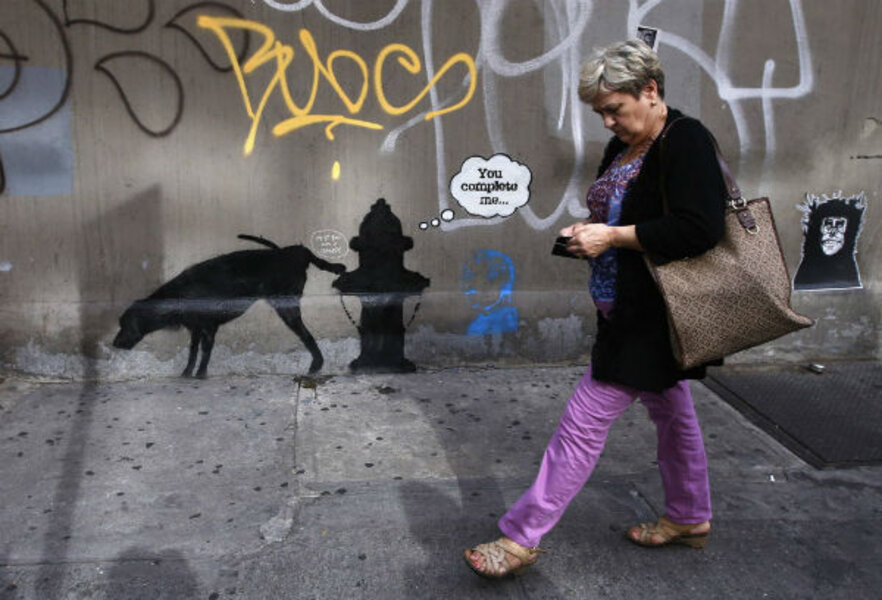Banksy fools New Yorkers, but not one savvy mom
Loading...
Banksy, that clever, elusive, British street artist, may have been able to prank most New Yorkers, fooling them into thinking his priceless works were knockoffs sold by a street vendor, but one mom outfoxed the fox buying two of his signed works for $60 after negotiating a 50 percent discount, The Associated Press reports.
A big invisible mom high-five to that New York mom who wanted the works for her kids, according to the Banksy website where the video footage from the Central Park stall was posted.
Because all four of my sons and I are Banksy devotees we have been following the world-famous street artist whose original works have sold for more than $1 million as he performs a month-long "residency" in my hometown, New York.
Sadly, we live in the street-art-challenged City of Norfolk, Virginia where graffiti artists are regarded on par with Al Qaeda and no sooner do I snap a pic of something brilliant than it’s painted over and the artist is Public Enemy No. 1.
My son, Ian, 19, has been a fan of street art and in rebellion to these erasures and the vilification of the artists has joined the cause by adding his own tag BadWolf in cement wherever possible. That’s what happens when Dr. Who meets Banksy in Norfolk.
I turned Ian on to the Banksy film “Exit through the gift shop” which is a gritty, witty, romp through the street artists realm with Banksy painting the picture of his work for us.
Back to Banksy in New York, where daily he day completes a new work and posts it on his website as part of his "Better Out Than In" exhibit. He parked a slaughterhouse truck filled with stuffed animals, a delivery truck housing a trompe l'oeil paradise, and a bunch of graffiti that's been defaced already.
However, the one that is never going to be erased from the minds of art consumers was Banksy’s decision to exploit New Yorker’s cynical side and put his priceless, signed works, out on the street boardering Central Park amid all the faux Gucci and electroplated “Rolex” merch (short for merchandise) and sell them for $60 a pop.
To really make this one stick to our memory banks, Banksy set up a camera and videotaped the would-be buyers and posted the resulting footage on his website.
Watching the video is painful for Banksy lovers and native New Yorkers, of which I am both.
People who probably would have lined up for miles to see his works plough past the elderly man who sits by them waiting in vain for someone to stop.
New Yorkers are trained from childhood not to consider buying from street vendors because they are usually shoddy merchandise that’s a cheap knock-off a more expensive item, or “hot,” as in stolen goods.
I personally would have stopped to long for one of the pieces, even a fake, but not make the purchase because for the mom of four boys, $60 in this economy is out of the question for my budget.
However, as the hours and pedestrians flew by, the video on Banksy’s site shows that the first to stop and buy not one, but two real Banksys was a mom who haggled him down to a 50 percent discount.
The unidentified woman told the vendor she was buying them for her kids, according to MSN.
I salute her not only for her shrewd haggling, but for seeing street art as something that belongs on a child’s wall.
Later in the day others, all non-New Yorkers, followed her example but none haggled as the mom did.
Banksy’s social experiment revealed the desensitization to reality and art of the urban dwellers of my home town.
This piece of performance art also sketched the outline of moms as those who can see the art of getting a deal and the beauty of a spray painted street corner image as something to share with her children.








